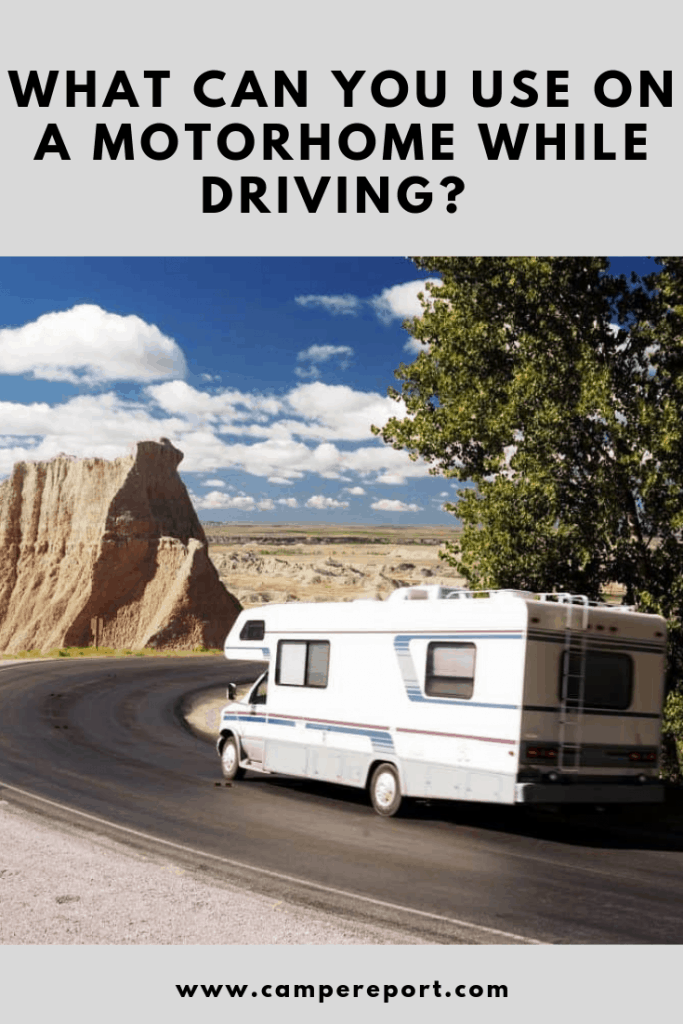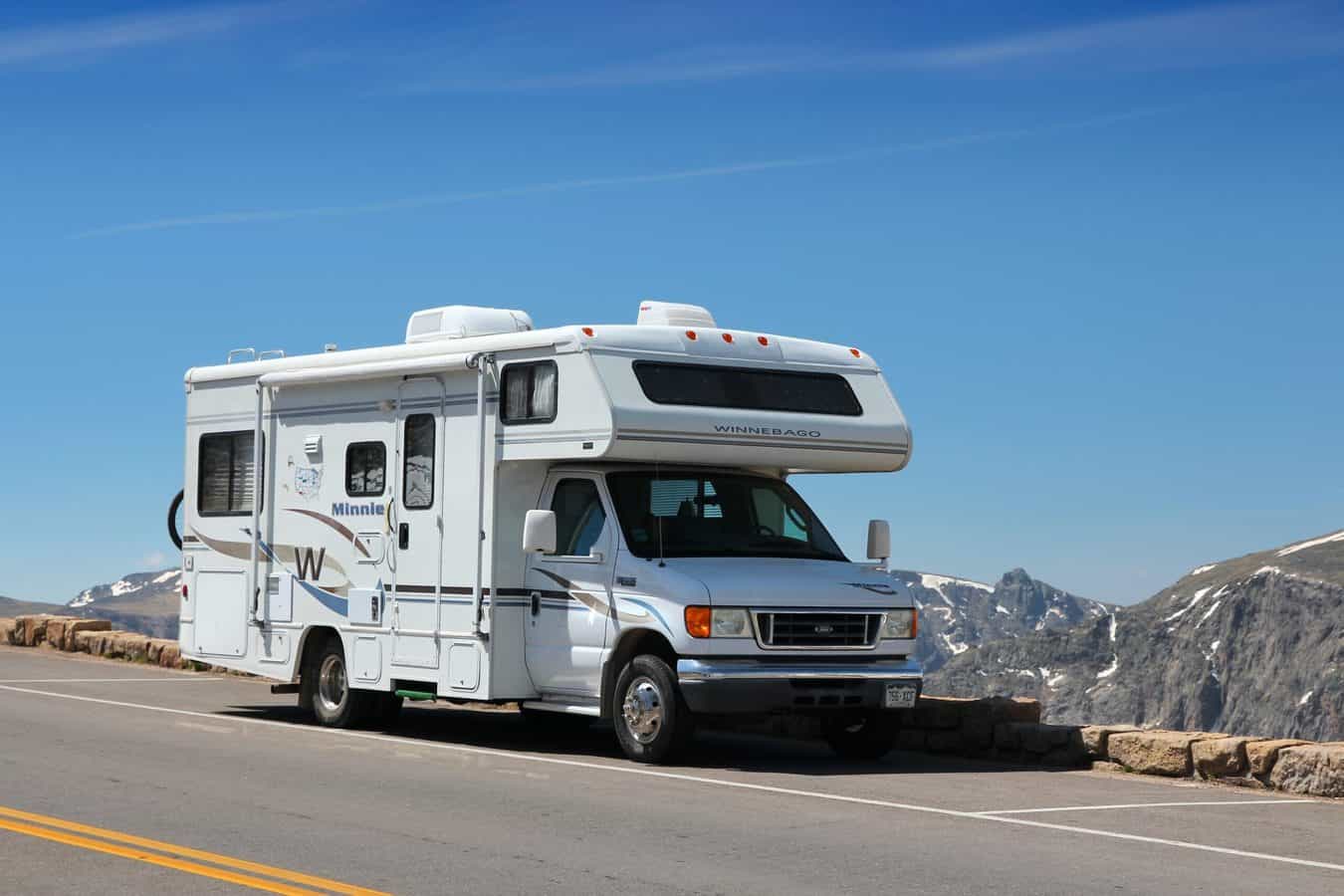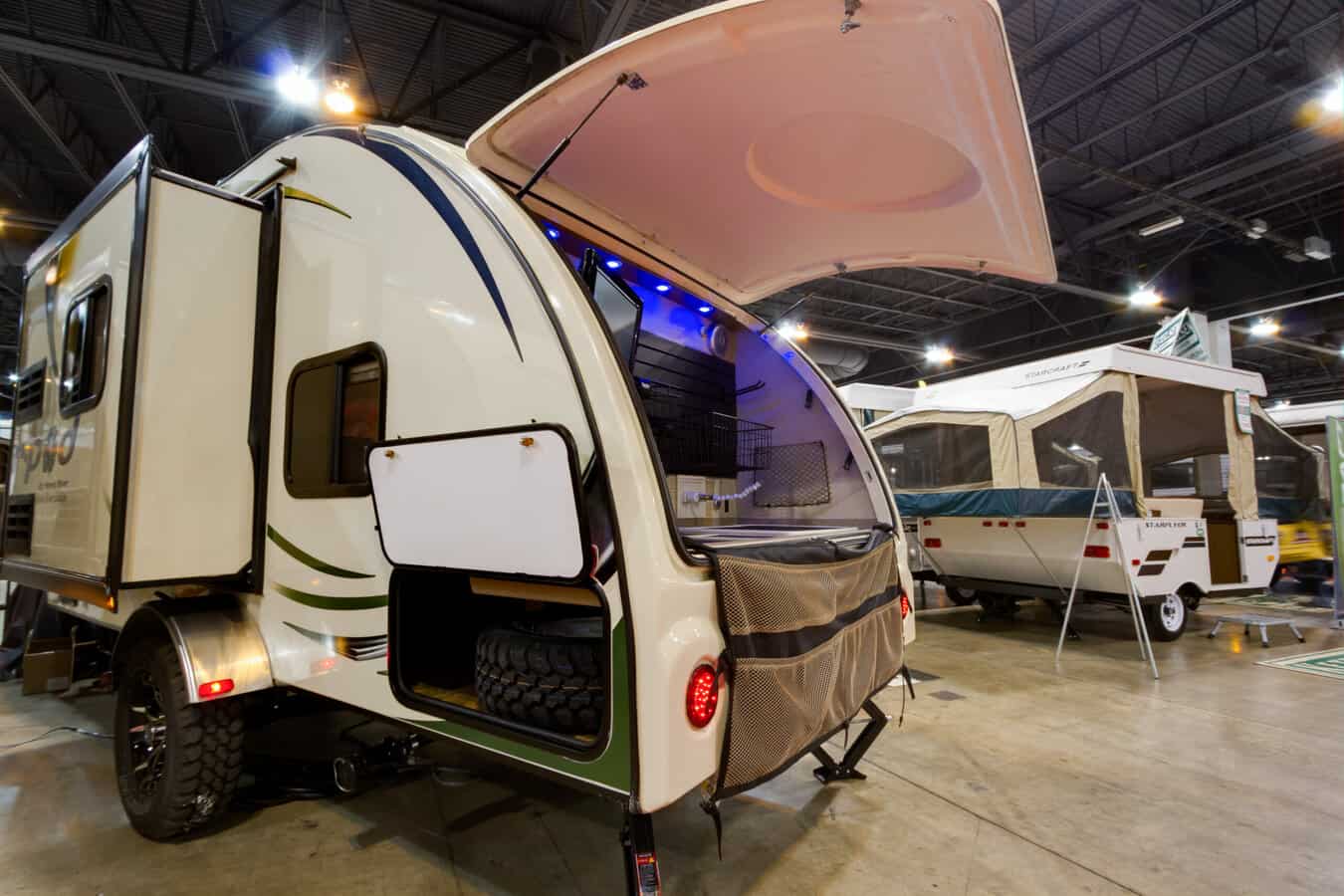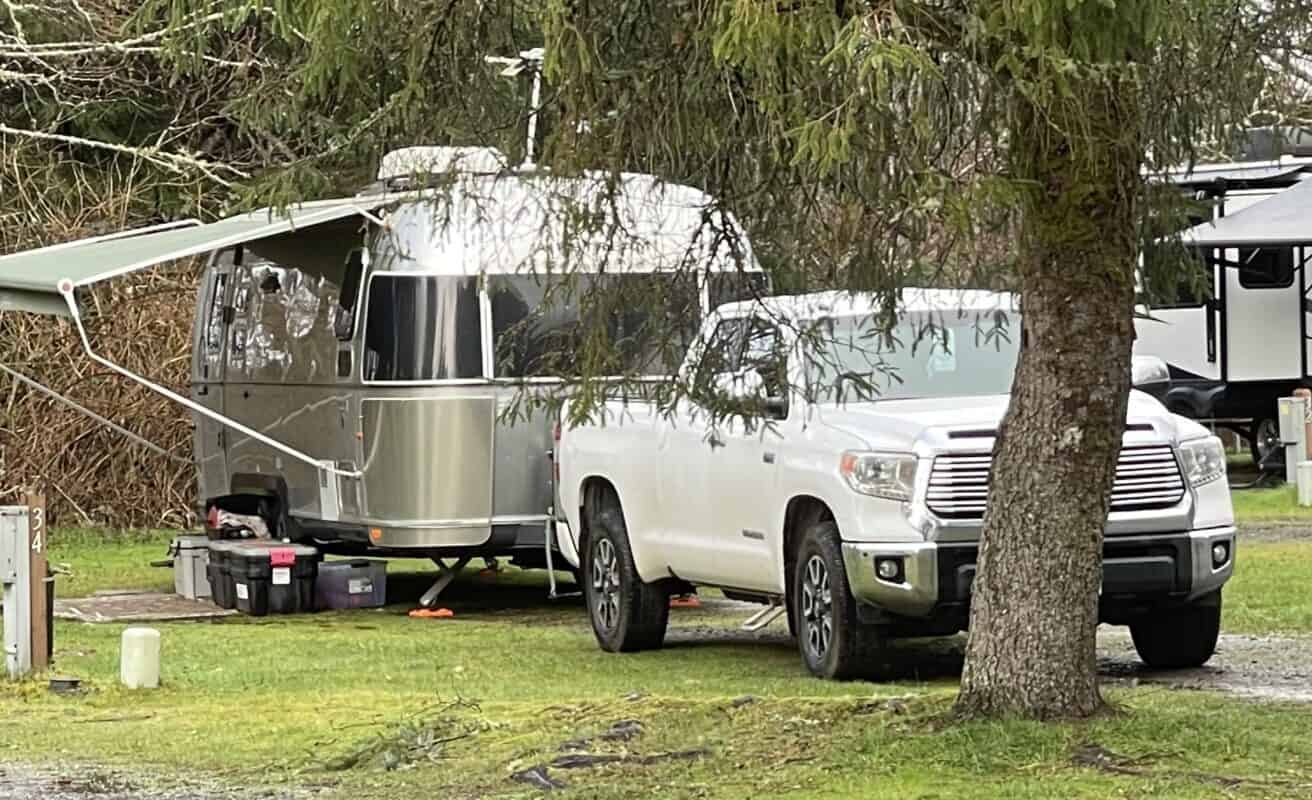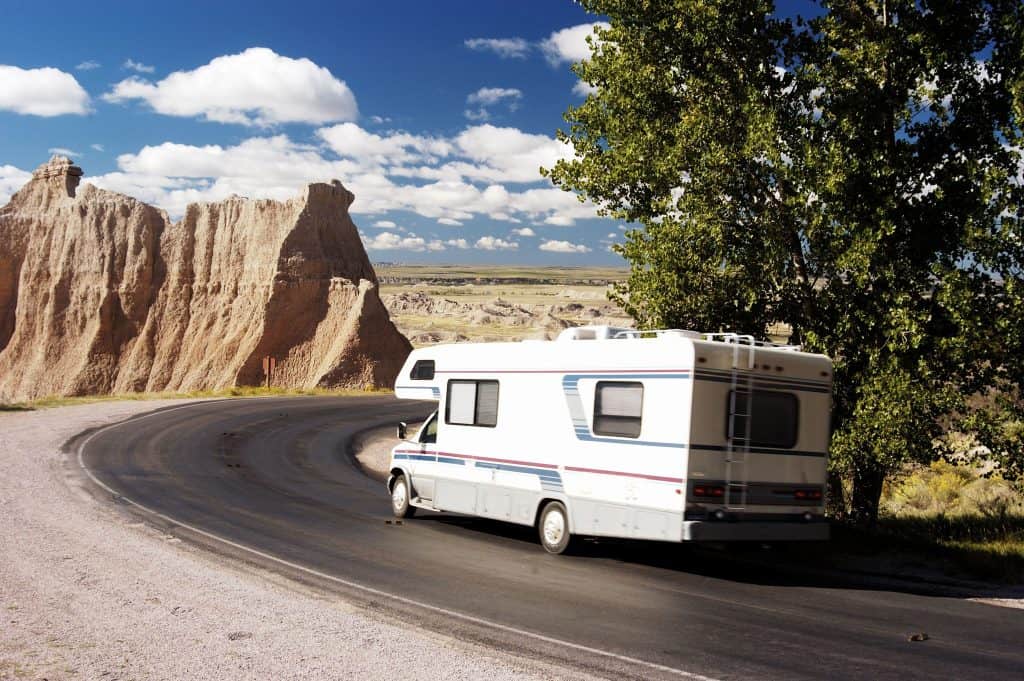
Owning a motorhome allows you to live more comfortably while traveling down the road. However, for safety and legal reasons you may be asking yourself, what parts of your motorhome can you use while driving?
Most amenities in a motorhome are equipped to be used both while the motorhome is stationary and while the unit is moving. However, this does not mean that it is always legal to use all the amenities while the motorhome is in motion. As well as legality, there are a few safety issues that arise when one uses the amenities inside a motorhome while driving.
Want to learn more about what you can use in your motorhome? Keep reading to see what is actually legal to use while the motorhome is in motion and to learn more about the safety issues that may arise as you travel down the road!
Amenities That Work in Motion
One of the main reasons people purchase motorhomes is because they offer access to food, a bathroom, and relaxation all in one convenient space on the road. However, as we mentioned above there are some concerns about what is safe, and legal, to use while traveling down the road in your motorhome.
Before we discuss the safety and legality of driving, let’s look at what you are physically able to use while driving.
Surprisingly, almost all of the amenities in your motorhome are accessible and usable while you are traveling down the road. There is no switch that flips as soon as the motorhome is in motion, leaving everything accessible to passengers while traveling.
The most common amenities used while driving a motorhome are the bathroom, the beds, the air conditioner, the generator, and the convection microwave.
While the motorhome is in motion, you should NEVER use any of the slide outs. Even if you are simply looking for an extra inch of space while traveling do NOT extend the slide-out.
Like other vehicles, motorhomes are designed aerodynamically and opening the slide-out will throw off the aerodynamic balance. Not to mention that opening the slide-out will put you and all of the other passengers in the motorhome at risk since the slide is not meant to withstand the forces of air during travel.
If you are hoping to cook in your motorhome while driving, there are a few things to consider. These may include what type of cooking amenities does your motorhome feature, what does the road in front of you look like, and finally, is it really worth it?
Let’s first consider what could happen if you do not look at the route you will be taking and you put some soup in the microwave or on the stove. First of all, cooking on the stove would require you to remain standing for the entire cooking duration. This puts you at a higher risk of being seriously injured in the event of a crash. As for the first scenario, if you take a sharp turn, your soup is likely to tip creating a disastrous mess in your motorhome!
This brings us our final consideration, is using the amenities while traveling really worth it? Cooking in the motorhome could potentially lead to a giant mess and increases the risk of putting you in danger. Before you decide to cook a meal in your motorhome, consider if convenient cooking is actually worth all of the potential trouble.
Still wanting to try cooking a meal in your motorhome while driving? Watch this video of someone cooking while on the road!
Possibly the most commonly used amenity in a motorhome while in motion is the bathroom. At last, there is no need to stop for a bathroom break adding time onto your overall trip.
The electrical systems will still be in operation, so you are even able to use the water pump in your motorhome while driving.
Want to learn more about using the motorhome bathroom while traveling down the road? Click the following link to view my article about RV Bathrooms In Motion!
The final amenity that most people hope to use in their motorhome is the air conditioner. The air conditioners in the cockpit area of the motorhome do not tend to be powerful enough to cool the entire motorhome. For this reason, on a hot day, it becomes extremely important to find a cooling solution.
Luckily, you are able to run the motorhome’s air conditioner while traveling down the road! The only downside to running the air conditioner is that it requires a higher number of amps to operate. This means that the motorhome’s batteries will not be able to support the air conditioner alone and the generator will need to be run to power the motorhome.
Many motorhomes come with a built-in generator. This style of a generator can be run while traveling down the road and is able to sufficiently power the air conditioner while the motorhome is in motion. However, in some states or areas, there may be laws against what kinds of motorhomes can run while driving.
Learn more about what is legal to use in your motorhome by reading the following section!
What is Legal to Use While Driving?

As I mentioned in the last section, some amenities such as the generator are able to be used while the motorhome is in motion; however, in some cases, there are laws that restrict you from using certain amenities.
Where and why are there requirements for when your motorhome’s generator can be run? Well, many states or towns have noise limitations and exhaust regulations.
In the following chart, you will see which of the states have regulations regarding the maximum noise level and any exhaust system regulations!
| State | Motor Vehicle GVWR | Maximum General Noise Level | Exhaust System |
|---|---|---|---|
| California | All | 80 dbA | Exhaust shall not be directed to the side of the motor vehicle between 2′ and 11′ above the ground |
| Colorado | >5,999 lbs. | 86 dbA | – |
| Connecticut | >10,000 lbs. <9,999 lbs. | Soft Site: 72 dbA @ <35mph 79 dbA @ >35mph Hard Site: 74 dbA @ <35mph 81 dbA@ >35mph Soft Site: 80 dbA@ <35mph 90 dbA@ >35mph Hard Site: 88 dbA@ <35mph 92 dbA@>35mph | Exhaust must be directed at the rear of the vehicle |
| Florida | >10,000 lbs. | 83 dbA | – |
| Georgia | – | – | Exhaust should be directed beyond the rear and out of the passenger cabin |
| Illinois | <8,001 lbs >8,000 lbs | 74 dbA@ <35mph 82 dbA@ >35mph 86 dbA@ <35mph 90 dbA@ >35mph | – |
| Maryland | All | 80 dbA | – |
| Massachusetts | – | – | Exhaust must be released beyond the vehicle |
| Michigan | <8,500 lbs >8,499 lbs | 80 dbA 83 dbA | – |
| Minnesota | >10,000 lbs | 86 dbA@ <34mph 96 dbA@ >35mph | – |
| Nebraska | >10,000 lbs | 86 dbA@ >35mph 90 dbA@ <36 80 dbA | – |
| Nevada | <6,000 lbs >5,999 lbs | 84 dbA 86 dbA | – |
| New York | <10,000 lbs >9,999 lbs | 76 dbA@ <35mph 82 dbA@ >35mph 86 dbA@ <35mph 90 dbA@ >35mph | – |
| Oregon | All | 80 dbA | – |
| Pennsylvania | <6,000 lbs >5,999 lbs | Soft Site: 76 dbA@ <34mph 82 dbA@ >35mph Hard Site: 78 dbA@ <36mph 84 dbA@ >35mph Soft Site: 86 dbA@ <36mph 90 dbA@ >35mph Hard Site: 88 dbA@ <34mph 92 dbA@ >35mph | – |
| Rhode Island | All | 86 dbA@ <36mph 90 dbA@ >35mph | – |
| Vermont | – | – | Exhaust must be discharged at the rear of the vehicle |
| Washington | <9,999 lbs >10,000 lbs | 72 dbA@ <46mph 78 dbA@ >45mph | – |
| District of Columbia | All | 80 dbA | – |
Content credit of the Recreation Vehicle Industry Association (RVIA).
As we can see, depending on the state you are traveling in, there may be a different law regulating your use of generator while driving. Be sure to compare your generator’s noise level prior to setting out on your next adventure!
The next biggest problem with using amenities in your motorhome while in motion is the seatbelt laws by states. Some states may permit passengers to move about the unit while driving, and others may not.
21 states require all passengers to be secure in a seatbelt while the motorhome is moving. This means that in these 21 states, you are unable to use any amenities so long as the motorhome is in motion (yes, this includes the bathroom).
Learn more about what each state’s seatbelt requirements are by reading these articles by the RVIA and the Central for Disease Control and Prevention (CDC).
Remember, if you are traveling in a state where the laws permit you to move about the motorhome while in motion, you should consider whether doing so is safe or not.
Safety Issues
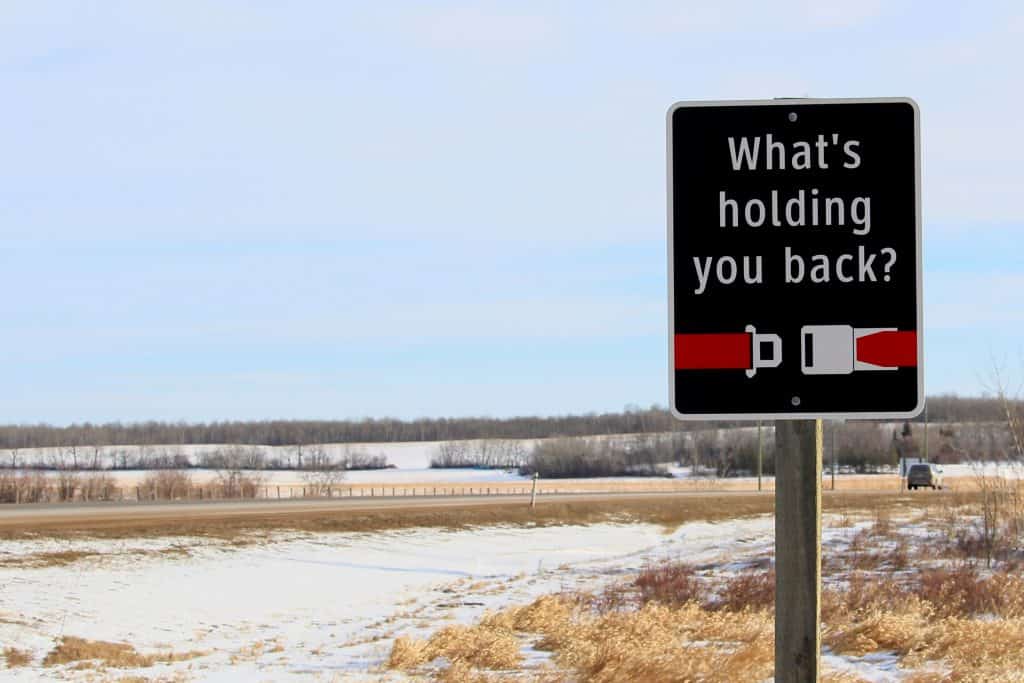
This brings us perfectly into our final point of what you can- or rather what you SHOULD use on your motorhome while driving.
Earlier when we discussed cooking in the motorhome while traveling, I mentioned that you should consider what powers your cooking utilities.
Why might I have asked you this?
Well, although using the electricity in your motorhome while driving does not pose too much threat, other power sources, such as propane can lead to an extremely dangerous situation.
You should NEVER use your motorhome’s propane while driving. If the vehicle was in a wreck (even a minor one) and a propane line breaks, the motorhome could potentially catch fire. Make the smarter choice and choose never to turn the propane on while the motorhome is in motion.
You should not sit anywhere in the motorhome that does not have a seatbelt while in motion. These areas have been designed a little stronger to keep passengers safe. Any other area is not designed to withstand a crash.
Like other vehicles, motorhomes are designed stronger in some areas and weaker in others in order to protect the passengers being transported inside. However, the difference between a motorhome and a vehicle is that motorhome’s do not have a set of standards their models must go through in order to be deemed “crash-safe.”
In fact, you may be surprised at how often airbags are actually put inside a motorhome. Read this article on Motorhome Airbags to learn more!
It may surprise you that even the areas designed to keep passengers safe in a motorhome are weaker than those that are in other vehicles. This means that you should remain seated and seatbelted for the entire duration of the trip in order to remain as safe as possible.
Standing, walking, or even laying down in an area not designated for passenger travel use could put you and others in serious danger. In the event of a wreck, who knows where the sudden force could send you: onto a hot stove, off of the toilet, or into another passenger. Keep yourself and others safe by simply waiting until the motorhome is at a complete stop before moving about.
We have already discussed the importance of seatbelts legally, let’s take a moment to understand the safety behind remaining secure in a seatbelt while traveling in a motorhome.
Why is it important to wear our seatbelts?
According to the Centers for Disease Control and Prevention (CDC), in the year 2016, 23,174 people died in a motor vehicle accident. In order to further stress the importance of wearing a seatbelt, over 2.6 million people were injured in car accidents in 2016.
Now you may be wondering, how will wearing a seatbelt keep me from being in a motor vehicle accident? Ultimately, wearing a seatbelt will not prevent you from being in a motor vehicle accident. However, wearing your seat belt can minimize your injuries and keep you safe in the event you find yourself in a crash.
Don’t believe me that a seatbelt is the best preventive measure for motor vehicle accidents? In 2017, the National Highway Traffic Safety Administration (NHTSA) estimated that close to 15,000 lives were saved due to the use of a seatbelt. The NHTSA goes on to estimate that almost another 3,000 lives could have been saved had they been wearing seatbelts.
“Seat belt use is one of the most effective ways to save lives and reduce injuries in crashes. Yet millions do not buckle up on every trip.”
Centers for Disease Control and Prevention
While it may not be convenient to always be wearing a seatbelt, it may just save your life and the life of others by wearing your seatbelt at all times. Before you leave on your next trip, be sure everyone has a seatbelt that fits them properly and to remind everyone to remain seated and secured as long as the motorhome is in motion.
If you are traveling with small children they may need a separate car seat to keep them safe while traveling. However, there may not be anywhere to safely attach their seat to in the motorhome. Keep your children safe by driving a separate vehicle and strapping their seats in properly.
As a reminder to all, it is illegal (and unsafe) to keep passengers in a pull behind travel trailer or fifth wheel in all states. View each states individual laws for riding in a towed RV on RVIA.org.
Conclusion
All features in a motorhome are available for your use even while the vehicle is in motion. However, simply because you are able to use the amenities in your motorhome, does not mean that it is legal to use them while the motorhome is in motion.
Furthermore, it may be legal to use some amenities, but this does not ensure it is safe to do so while the motorhome is traveling down the road. Choose to keep yourself and all the other passengers safe by remaining securely seatbelted for the duration of your travels.
A motorhome provides a plethora of convenience while traveling. Having a bathroom, kitchen, bedroom, and living room at your immediate disposal can be extremely helpful and time-saving. However, one should simply enjoy the fact that they have access to all of those amenities AFTER arriving at their final destination.
All of us here at Camper Report wish you happy and safe travels, wherever your motorhome may take you!

